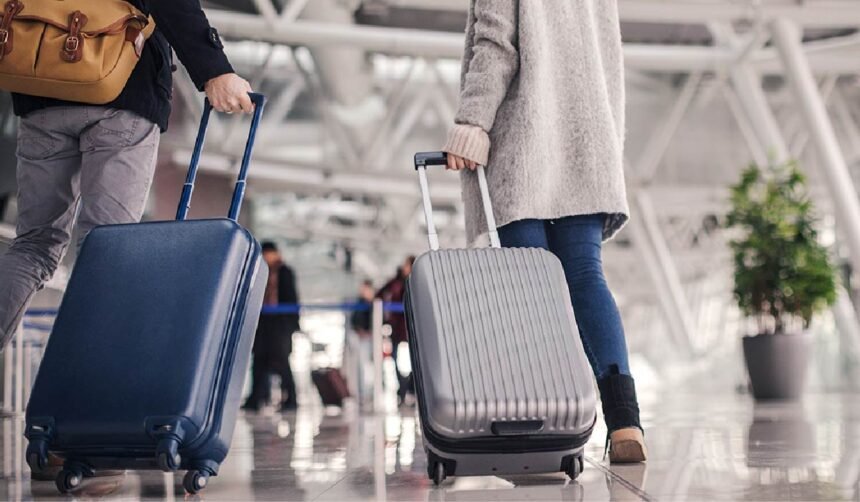Travelling internationally is exciting, but it also comes with a few headaches. You still need to follow a fair share of rules and restrictions, such as carry-on baggage allowance, maximum dimensions, and the items you can carry on board. It makes you mindful of choosing the bag that fits your needs.
Choosing which carry-on luggage to use makes a difference. This guide has all the practical tips to help you get the best luggage for your next trip outside the country.
1. Know the Baggage Allowance
Every airline has its own carry-on baggage allowance rules, including a 56cm x 36cm x 23cm dimension for your bag and the total weight they permit. The airline also sets the rules for allowing you to bring a bag other than a carry-on, such as a handbag or a purse.
Whatever the case, ensure your best carry-on luggage follows the airline rules. Refer to their guidelines before you board to avoid confusion.
2. Understand International vs. Domestic Rules
When travelling domestically, carry-on items may be subject to more relaxed rules than on international flights. Some domestic flights may allow slightly larger or smaller items, while international routes may have stricter international terminal checks.
- Domestic flights might let you carry liquids more freely.
- Security screening officers can impose stricter limits on international flights on gels, powders, and liquids, including baby formula, protein powder, and inorganic powders.
Make sure you know the difference, so your baggage won’t get caught in the boarding gate.
3. Pick the Right Shape
The most important thing when choosing your carry-on is whether it fits in the overhead compartment or under the seat in front of you on the plane.
When choosing a standard luggage, make sure it fits in the overhead locker without exerting even a small amount of force. You can bring a garment bag if it meets the dimensions or if the airline allows it.
Check if your small personal items and the extra bag meet the limits. When you buy the right carry-on, the cabin crew will find it easier to tow it in the aircraft cabin.
4. Choose Lightweight but Strong Materials
Your carry-on should be light enough to be carried onboard and follow the weight limits, but sturdy enough to protect your items.
Look for these qualities:
- A reliable locking device
- Durable zippers
- Fitted handles
- Lightweight yet tough fabrics for easy handling across the airport
Even if it’s a standard piece, your well-built luggage will withstand keeping personal items inside it.
5. Choose Luggage That Matches Your Fare Class
The fare class also dictates your baggage allowance. If you’re in premium economy, you can get a slightly larger baggage allowance for your carry-ons.
Economy often limits you to one small carry-on only. However, airlines offer more baggage allowances for frequent flyers.
Carry-On Packing and Handling Tips
Plan What to Pack Inside
You can only carry the items permitted by security screening officers, including:
- Handbags, laptops, or purses.
- Walking stick, prosthetic devices, and medical items.
- Children’s needs, such as baby formula.
Duty-free goods purchased at the international terminal are often cleared before you can bring them home.
However, you’re not allowed to bring these items:
- Sharp tools that the airlines have listed.
- Containers larger than the allowed volume.
- Certain liquids and aerosols that are not compliant with international flight rules.
All your containers should have a fitted cap and be properly sealed. On the other hand, your checked baggage shouldn’t contain any prohibited items.
Consider Flexibility with an Extra Seat
Your carry-on should be small and handy enough to be allowed to take an extra seat on the plane. This is especially important when you’re travelling in premium economy, where you may want to keep your personal and delicate items close to you.
Prioritise Easy Access in the Aircraft Cabin
Your main item goes into the overhead compartment throughout the flight. Place all your important documents, electronics, snacks, and personal stuff you may need mid-flight in a handbag. This way, you don’t need to stand up too often or block other passengers when they walk along the aisle.
Check Airport Security Rules Before Flying
Different airports have different rules. Some may ask for extra payment for powders, while others don’t. Security officers can inspect your baggage to see if it complies with the total dimensions and weight.
Understanding these rules beforehand spares you from a lot of trouble. You won’t be delayed at the boarding gate.
Final Thoughts
Getting the right carry-on luggage reflects your style and preferences. Knowing your allowance, buying a bag with the exact maximum dimensions, and understanding what you can bring make the entire flight hassle-free.
Smart planning is the best strategy for a smooth journey. You should get carry-on luggage that fits in compartments and can be taken anywhere effortlessly. Care for it so it lasts for years in your hands.








